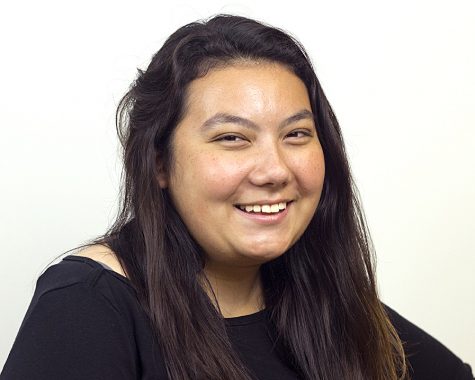Reserves, staffing actions, staving off further adjustments until June
April 21, 2016
Because of furloughs, layoffs and salary deferrals, the university will be able to go until June 30th, or the end of the fiscal year, without any further adjustments.
The university does not anticipate having any more layoffs, furloughs, or salary deferrals between now and June 30th, but after the end of the fiscal year Eastern will have to see what the state does to determine what actions it will take next.
Paul McCann, interim vice president of business affairs, said the school’s reserves are allowing Eastern to stay open and actions the school has already implemented are working.
“What we’re trying to do is get through June 30th with the current amount of money (we have),” McCann said. “We’ll do everything we need to do, but we still need an appropriation.”
Along with the furloughs, layoffs and salary deferrals, the university saved money on operations by buying less of certain supplies such as paper.
The money from tuition, such as that from summer enrollment, will help Eastern get through the next months.
McCann said how much it will help will depend on how many students enroll.
“The more people that register, the more money it is,” McCann said.
He said there is no real difference between summer school and the fall semester.
“If everyone were to bring all their friends from home, it would be better than if they didn’t bring them,” McCann said. “It is our desire to have as many students as we can.”
McCann said the tuition money would be a big source of help as enrollment is a financial factor the school can do something about.
“We can’t force representatives or senators to vote for an appropriation,” McCann said. “We can sell EIU, say it’s a wonderful place, that our students get diplomas, then get jobs.”
The summer semester is split in between two fiscal years, with six-week courses ending in July and eight week courses ending in August.
Regis Gilman, a dean in the school of continuing education, also said summer enrollment helps the school be able to go without adjustments until June 30th and that so far, enrollment looked good.
“We do get students who come from community colleges, first time graduate students with no degree,” Gilman said. “A lot of students are coming in. Students who work at Eastern are coming back, new students are applying.”
Gilman said the summer courses are drawing students to Eastern, so she agrees with McCann when he says they are going to be able to use that tuition.
“(People) are realizing that EIU is still here,” Gilman said.
Gilman said enrollment can change every day, as people are still able to register for summer classes.
As of Thursday, they had 2,119 students enrolled. 2,387 students were enrolled around this time last year. These numbers change all the time, however, as students’ are registering every day and these numbers are expected to increase. Music, family and consumer sciences, and communication disorders and sciences are among other programs that have not registered yet.
Things such as the weather and how students’ computer is working can affect whether or not they register, Gilman said.
“Is there something else you would rather do than register,” Gilman said.
Students can also go to a Summer Institute as freshmen, and conferences and camps during the summer raise revenue as well.
Gilman said by opening up programs to students in the summer who might otherwise have waited until fall, their tuition would start in the summer as well.
Off-campus cohorts that have not registered yet help with this as well.
Some reasons students study at Eastern in the summer include the transferability of the credits, convenience, to catch up on classes and credits they still need or even take classes with certain professors.
“We need to promote that more, so students realize in the summer just as in the fall and spring you have the opportunity to be at a university that is different than being in a community college,” Gilman said.
A focus the school of continuing education has had is on bringing back adult learners. Having more online courses has helped bring in students as well.
While Eastern continues to wait for it’s needed appropriation, several bills are being proposed to fund higher education.
HB 5045 and HB 2344 are asking for emergency funding for higher education from the Education Assistance Fund, which pays for both K-12 and higher education.
HB 5045 only asks for funding for Eastern, Chicago State University, Western Illinois University, Northeastern Illinois University and Southern Illinois University.
By the end of FY16, the Education Assistance Fund will have more than $600 million.
Kevin Shoeben, the deputy director of fiscal affairs and budgeting, said the Education Assistance Fund is just another revenue source at the state’s disposal, and that most of the appropriations four public universities does come out of the Education Assistance Fund.
Illinois has two funds from appropriations for higher education come from, General Revenue and the Education Assistance Fund.
The Education Assistance Fund and state general revenue funds are used interchangeably, depending on the amount in each fund, Shoeben said.
Cassie Buchman can be reached at 581-2812 or [email protected]
















































